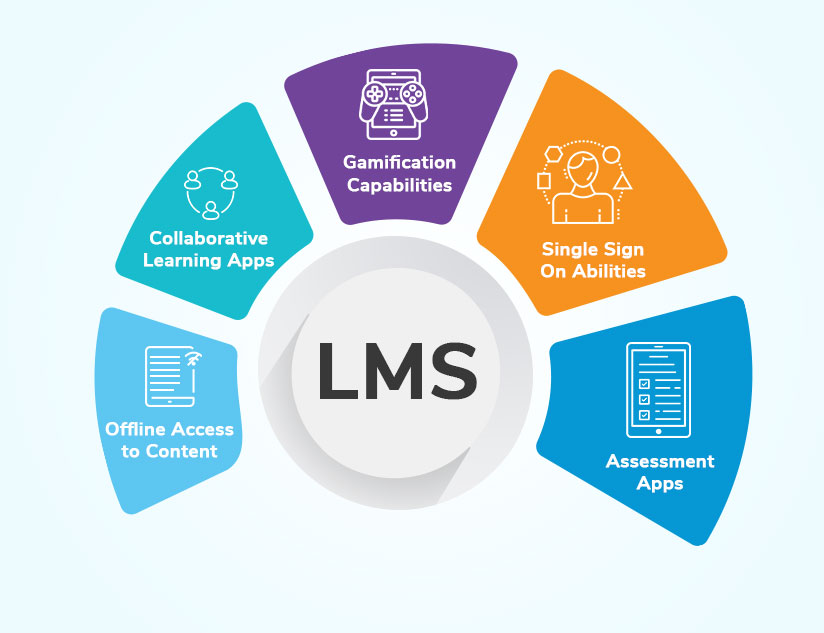The education sector is one of the most severely impacted by COVID-19 pandemic. As the infection rates keep on surging, it does not seem like the situation is going to change any time soon. Despite a push to reopen schools, both educators and physicians believe that reopening schools is not yet safe for children. In a survey by USA Today and Ipsos poll, it was found that around 1 in 5 teachers are unlikely to come back if the schools open in the fall.
This leaves only one option, remote learning. But implementing effective remote learning is a challenge in itself. Some resorted to extremely innovative solutions to continue to deliver education despite the stay at home orders. For instance, Montgomery High School in West Virginia is using drones to deliver study materials. But this does not address the entire problem, and it is too expensive for most schools. A much better and more widely used means of delivering remote learning is via robust learning management systems (LMSes).
But not all LMSes are as powerful. To be able to deliver education that is engaging, motivating and easy to comprehend, the right EdTech apps need to be integrated on the LMS. This not just make the learning experience much more rewarding for students, it can also lead to better academic outcomes. So, here’s a look at some must-have apps for effective remote learning.
1. Offline Access to Content
Internet access is one of the biggest impediments to remote learning. Not every student has constant access to a reliable, high-speed internet connection. In fact, among households that earn less than $30,000 annually, almost 44% do not have a reliable internet connection. This highlights the need for an offline eReader app.
The eReader should allow students access to content both online as well as offline, increasing accessibility and student engagement. Apart from access to content, some of the features that the eReader app should have are:
Bookmarking
The user should be able to mark the pages they want to go through later to study or revise. The bookmarked pages should also be available in the offline mode and get synced when the student is online the next time.
Annotations and Highlighting
The learner should also be able to add on-page notes as well as highlight important text. This feature should also be available in the offline mode with online sync.
Customizable eReader Skin
Schools can customize the eReader, so that students continue to feel connected to the larger classroom and institution. This improves the user engagement.
2. Collaborative Learning Apps
Collaborative learning has been proven to help students understand concepts better, while facilitating higher level thinking, instead of just memorizing facts and figures. When students have the ability to complete assignments as a group, they end up helping each other through the learning process. In addition, discussion forums and message boards can help students discuss ideas, viewpoints and concepts. This helps in achieving a much deeper understanding of concepts, than students would have achieved alone.
Sitting physically together is not really a possibility in virtual classrooms. However, with collaboration apps, students can communicate in real time and benefit from regular interaction. There could be message boards or groups where students can post their comments and others get notified and can reply. The teacher should also have access to such groups. This helps in regulating them and answering any questions that students might have.
3. Gamification Capabilities
Apps that allow the integration of gamification and interactive elements in the content can prove to be hugely beneficial. In a recent study, it was found that the use of gaming elements, such as puzzles and quizzes, can improve behavioral, emotional and cognitive engagement of students. Gamification also makes learning more fun for students, increasing their motivation to learn. In fact, almost 67% of students are more motivated when learning through gamification elements. Leaderboards and achievement badges are a great way to keep the motivation up even during times when students are isolated at home.
4. Single Sign On Abilities
With multiple apps allowing different capabilities, students and teachers might need to sign on to each app to be able to use it. This can be very cumbersome because they will need to remember a large number of login credentials. Now, if the LMS is integrated with an app like Clever, which allows single sign on capabilities, users can access all the apps and features with a single login. This improves usability and satisfaction for the user. It also offers greater security. In addition, for younger children, who might find it difficult to login with usernames and passwords, Clever Badges offers the ability to simply hold up the badge to the webcam to sign in.
5. Assessment Apps
Assessments are a vital part of effective learning. They inform the students about their strong areas and where they need to work harder. The assessments are also a source of information for teachers, about how each student is progressing, who needs support and whether their teaching methods need to be revised. An effective LMS should integrate a robust assessment engine that allows:
Video Assessments
Video assessments allow teachers to provide innovative group and individual assessments asynchronously. The teachers can offer personalized and pointed feedback too, using time-stamped video comments and text. This allows assessments to become much more personalized. In addition, it allows students to demonstrate skills in real-time, which is very useful for STEM courses.
Adaptive Assessments
Normal assessments can work well for most students, but not all. Standard assessments might also be the need of the educational system. However, to improve academic outcomes, adaptive assessments are incredibly useful especially for students who are exceptional and those who are lagging behind. They allow teachers to provide just the right push or support, where needed. With adaptive assessments, the difficulty level of the questions depends upon the number of questions correctly answered. These are considered a much better source of information about students than fixed form tests.
Instant Feedback of Assessments
Assessments can be much more effective when the feedback is instant. A study by the University of Minnesota found that comprehension is improved with the help of immediate feedback. Instant feedback also allows teachers to create better learning paths for students. In addition, with apps like GradeCam, the process of grading assessments becomes much easier and quicker for teachers.
If you are wondering how all these features can be deployed on a single LMS, check out a demo of MagicBox™. The award-winning platform offers integration with a wide range of apps and features that enhance digital education. In addition, it easily integrates with standard LMSes, such as Sakai, Blackboard and D2L, so that schools need not alter their existing ecosystem. Contact us to know more about MagicBox™ and how it can help.














